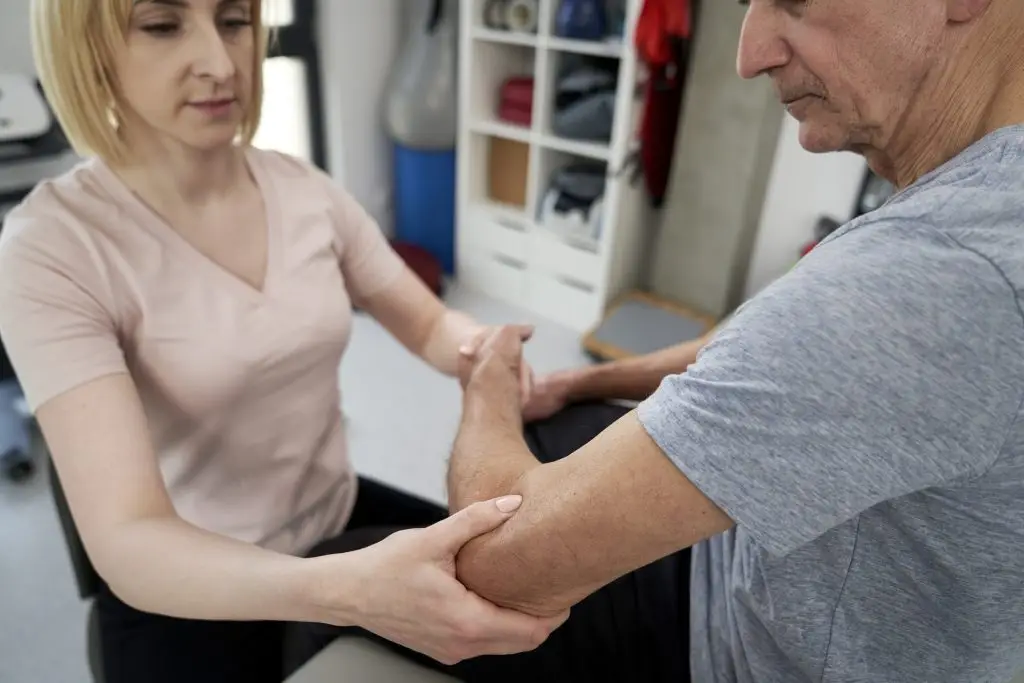There are dozens of conditions, injuries, and other causes of pain that can affect the complex elbow joint. But when you’re in pain and it hurts to do the things you need or love to do, all you need is a little relief. A physical therapy treatment plan can help you regain motion, flexibility, and strength to live your desired lifestyle.
Causes and types of elbow pain
Most people experience joint pain due to injury or overuse, but that’s not the only possible cause of elbow pain. There are also diseases and conditions that affect joint health in general and can increase a person’s risk of developing an elbow condition. A few examples of both chronic and acute elbow pain include:
- Tennis elbow
- Golfer’s elbow
- Fractures
- Rheumatoid arthritis
- Dislocated elbow
- Cervical (neck) disc hernia
- Muscle strains
- Tendinitis
Elbow pain can be sharp, dull, or somewhere in between. It can also heal on its own with rest, compression, ice, and heat treatments, or require medical intervention for more serious injuries.
Symptoms of common elbow injuries
The most obvious symptom of something wrong with your elbow is outer or inner elbow pain or elbow pain when straightening your arm. Other symptoms of elbow conditions include:
- Pain when the joint is touched
- Reduced flexibility
- Swelling
- Redness
- Burning
- Numbness or tingling
- Weakness in the hand or forearm
If any of these symptoms are interfering with your lifestyle, you don’t have to accept a lifestyle of discomfort. Our physical therapists are here to provide the answers you’re looking for and a plan of action to get back to the things you love.
How physical therapy can help
Because there are so many conditions that can affect your elbows and joints, it’s helpful to have an expert evaluation and diagnosis for your specific lifestyle, goals for healing, and preferred treatment method. Many of the elbow pain conditions we treat benefit from a combination of the following techniques:
- Manual physical therapy
- Ergonomics
- Dry needling
- Strengthening and stretching exercises
- Athletic technique training
- Posture and movement training
Not every elbow injury requires professional care and some elbow pain heals naturally given enough time, rest, and protection. However, for chronic elbow pain that keeps coming back over the course of weeks or even years, physical therapy may be able to pinpoint your elbow pain cause and help you find the specific, sustainable relief you’re looking for.
Through education and targeted interventions, we aim for your physical therapy plan to empower you to regain arm and elbow function quickly, allowing you to return to your normal lifestyle free from pain.
Get started on your recovery journey by calling one of our nearby office locations or calling us for a one-on-one appointment today.

